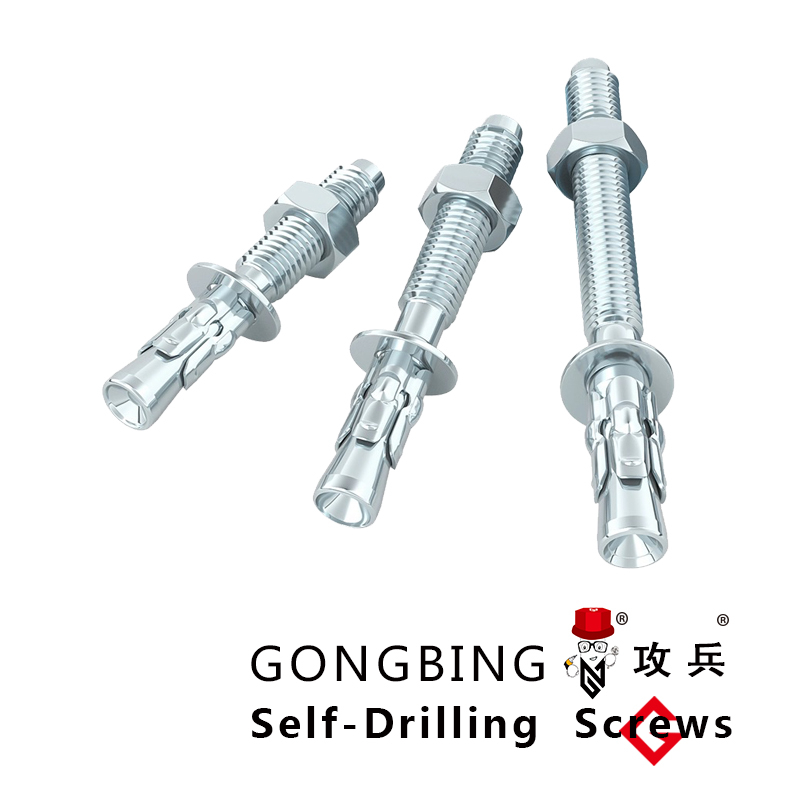resin anchors for concrete
The Importance of Resin Anchors for Concrete Applications
Resin anchors have become a crucial element in modern construction and engineering, particularly when it comes to securing heavy objects into concrete surfaces. Their popularity stems from their effectiveness, versatility, and the superior bond they create in comparison to traditional mechanical anchors. This article explores the benefits, applications, and installation processes of resin anchors, highlighting why they are a preferred choice for many construction professionals.
What are Resin Anchors?
Resin anchors consist of a two-part system usually made from epoxy or polyester resin, which is mixed with a hardener. This mixture is injected into a pre-drilled hole that has been created in the concrete substrate. When the resin cures, it forms a strong bond with the concrete, securing the anchor in place. The use of resin-based materials allows for a high degree of flexibility in weight capacity and application, making them suitable for a range of tasks.
Benefits of Resin Anchors
1. High Load Capacity One of the primary advantages of resin anchors is their ability to hold substantial loads. They are often rated for very high pull-out values, depending on the concrete’s compressive strength and the type of resin used. This capability makes them ideal for applications requiring safety and reliability, such as in construction and heavy machinery installation.
2. Versatility Resin anchors can be used in a wide array of situations, from anchoring machinery and structural components to mounting shelves and signs. They can also be employed in various environments, such as indoors, outdoors, and even in submerged conditions, making them suitable for both residential and commercial applications.
3. Minimal Expansion Force Compared to traditional expansion anchors, resin anchors exert minimal force on the surrounding concrete during installation. This reduction in expansion force minimizes the risk of cracking or damaging the concrete, ensuring the integrity of the structure remains intact.
4. Chemical Resistance Many resins are designed to be chemically resistant, making them suitable for use in environments exposed to various chemicals, including oil, acids, and solvents. This characteristic extends the lifespan of the anchors and enhances their reliability over time.
5. Low Installation Effort The installation process of resin anchors is generally straightforward and requires less time compared to other fastening systems. This efficiency can lead to significant labor cost savings on construction projects.
Applications of Resin Anchors
Resin anchors are utilized in a wide variety of applications, including
- Industrial Equipment Industrial settings often require securing heavy machinery and equipment. Resin anchors provide a reliable solution for ensuring that these items remain securely in place, even under heavy loads.
resin anchors for concrete

- Structural Reinforcement In retrofit projects, resin anchors can be employed to enhance the structural integrity of existing concrete
. They can be used to attach new beams or to reinforce existing structures.- Facade Attachments Buildings often require the installation of facades, fixtures, or signage. Resin anchors provide the strength needed to withstand outdoor elements while maintaining aesthetic appeal.
- Electrical Installations In many installations, such as fastening conduits, resin anchors play a key role in ensuring that electrical components are safely and securely fastened to concrete walls.
Installation Process
Installing resin anchors involves several steps
1. Drilling A suitable drill is used to create a hole in the concrete to the required depth and diameter.
2. Cleaning The hole must be cleaned of dust and debris to ensure a strong bond between the resin and the concrete.
3. Mixing the Resin The resin and hardener are mixed according to the manufacturer’s instructions to ensure optimal performance.
4. Injection The resin mixture is injected into the hole, either using a cartridge or a syringe, ensuring that it fills the hole adequately.
5. Inserting the Anchor The anchor is then placed into the hole filled with resin, and it is often twisted slightly to ensure even distribution of the material.
6. Curing Finally, the resin needs to cure for the recommended time before the anchor can be subjected to loads.
In conclusion, resin anchors provide a robust, versatile, and reliable method for anchoring in concrete applications. Their ability to handle heavy loads while remaining easy to install makes them a preferred choice for contractors and engineers worldwide. Whether in construction, manufacturing, or renovation, resin anchors continue to play a vital role in modern engineering practices, showcasing their importance in ensuring the stability and safety of various structures.
-
Weatherproof Plastic Expansion Anchors for OutdoorNewsJun.06,2025
-
Sustainability in the Supply Chain: Eco-Friendly TEK Screws ProductionNewsJun.06,2025
-
Load-Bearing Capacity of External Insulation FixingsNewsJun.06,2025
-
Double Head Bolts: Enhancing Efficiency in Industrial MachineryNewsJun.06,2025
-
Corrosion Resistance in Chipboard Screws: Coatings for Wholesale DurabilityNewsJun.06,2025
-
Butterfly Toggle Bolts : Enhancing Structural ResilienceNewsJun.06,2025
